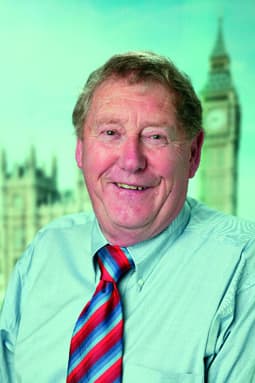Photography rights campaigner Austin Mitchell MP has hailed the recent counter-terrorism review a ?big advance? for photographers, though he also brands the reforms a ?government fudge?.
Last week Home Secretary Theresa May said that a new law would be drafted to replace Section 44 stop-and-search.
Austin Mitchell, who is a keen photographer, welcomed plans to replace the highly controversial anti-terror law with a more limited power, though it would continue to allow police stops without reasonable grounds for suspicion.
?We have won the day on [Section] 44,? said the Labour MP for Great Grimsby in an interview with Amateur Photographer (AP), a magazine with whom he has campaigned for photographers? rights in recent years.
?I think it will create a freer situation, so I think it is a big advance,? he told us.
However, he said it would be ?totally unacceptable? if large areas of London, with its many famous tourist hotspots, were covered by the new law on an ongoing basis.
?Provided the point is made that it has got to be used in an area deemed under threat for a specific case, for a temporary period… then we could accept this, clearly with reservations because we don?t want anyone to be stopped, but you?ve got to make some concessions.’
Though Mitchell said the reforms represent a ‘government fudge’, he said campaigners have won their ?main point?.
He accepts it was inevitable the Government would act cautiously on any law change in light of the continued terrorism threat in the UK.
However, along with other photography groups, Mitchell continues to call for a repeal of Section 58a of the Terrorism Act which, he said, had confused the legislation.
Originally applied to combat terrorism in Northern Ireland the law was brought into the UK mainland in 2009.
?On the mainland I see no point in retaining that offence,? he said, adding that it has caused problems with people taking photos of police officers and PCSOs in the recent past.
On the question of security guards, Mitchell called on the Government to ?issue clear guidance and instructions? – through security industry organisations – to stress that ?photography should not be regarded as an offence?.
Mitchell said that a meeting he held with the former counter-terrorism minister in March 2010, attended by staff from AP, played a key role in the anti-terror reforms and was recognised as such in the review findings which were published last week.
He points out that the Home Office drew up guidance on photography and terrorism in 2009, as a result of such lobbying, and hopes similar campaigning will also give rise to guidelines for security guards.

RELATED ARTICLES
Stop-and-search to be cut, says Home Secretary
Retired professor: How I became a terror suspect
How I became a terror suspect, first hand account
Police use Section 43 to stop photographer in Trafalgar Square
Photographers flashmob Scotland Yard on Fourth July 2010
Photographers can sue in wake of European ruling, says lawyer
European court rejects UK Government appeal
Police officers prevented picture-taking
ITN crew stopped while covering photo stop story
AP’s lens cloth outlining the rules on photography in public places
Police chiefs: Everyone has right to take photos
MET GUIDELINES reveal police risk breaking law







